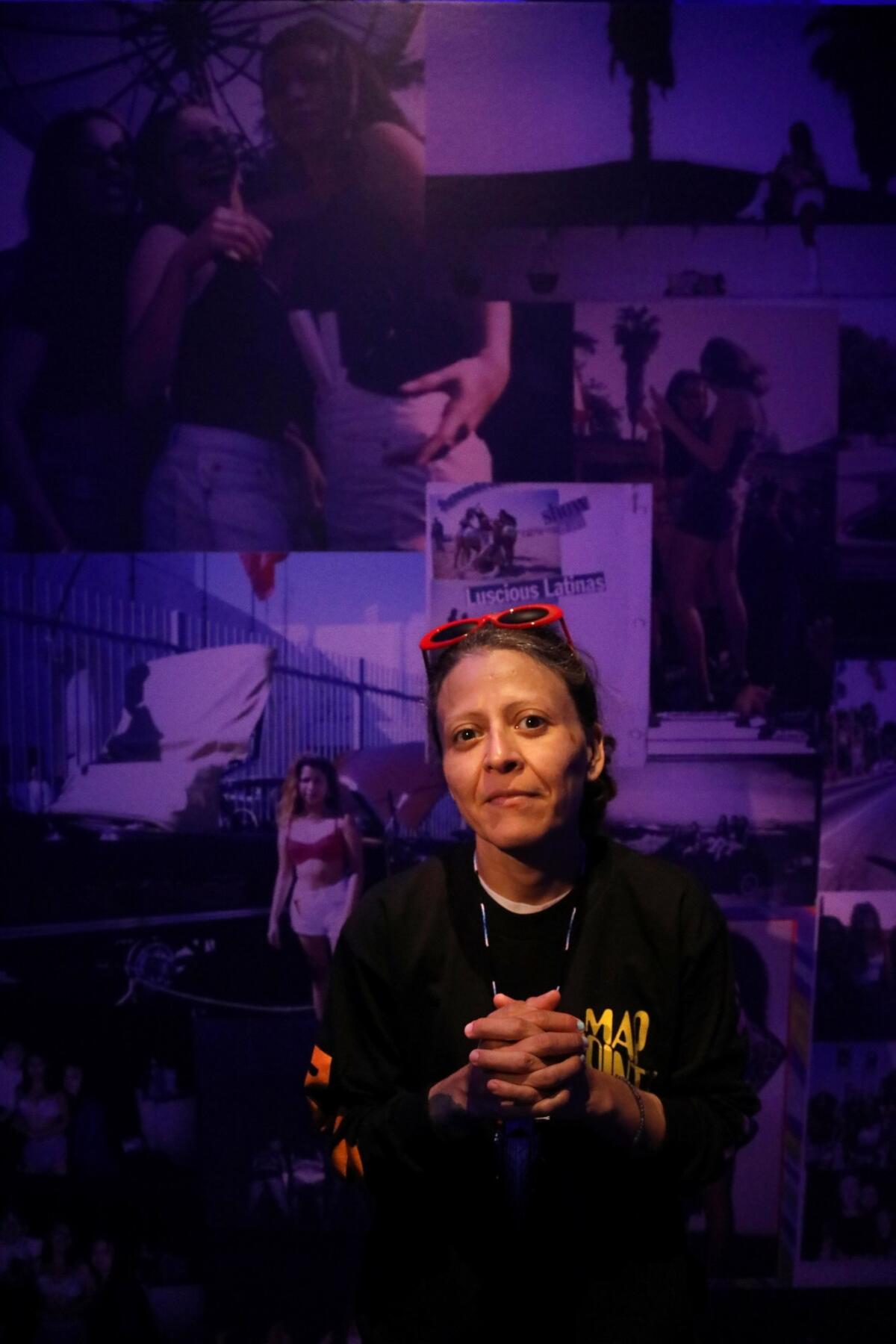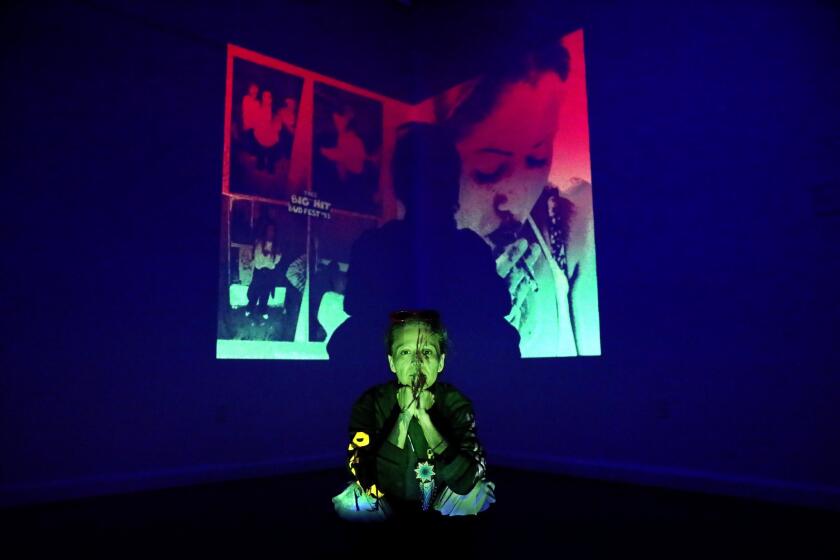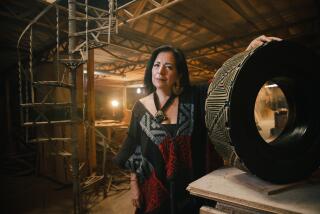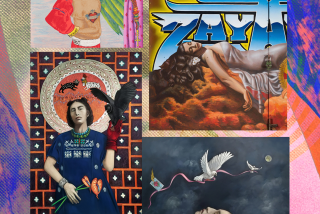Los Angeles artists probe grief and violence in video art show from Guadalupe Rosales
- Share via
When Los Angeles artist Guadalupe Rosales began to organize an evening of performances for the arts group Los Angeles Nomadic Division (LAND), she envisioned an event that would be live and in person.
“Then COVID happened,” she says.
Bringing artists and an audience together into a tight indoor space was impossible, so Rosales and curator Matthew Schum, who initiated the program, went back to the drawing board, not only for ideas about how to stage the show but to reconsider the event’s themes.
“I didn’t want to organize a performance like nothing is happening,” she says.
Rosales began to think about her own work, and the ideas she has explored over time.
“I’ve been photographing at night in Los Angeles for maybe a year or two,” she says. “It’s the nocturnal life of Los Angeles. It’s something I’m really familiar with. As a teenager, I ran the streets at night.” (Rosales became widely known five years ago for establishing the online archive of 1990s Chicano youth culture, “Veteranas and Rucas,” and her work has chronicled the Chicano party crews of the era — a scene of which she was a part.)

She also thought a lot about about violence — about how it is experienced and retained and manifested. This is also a long-running theme in her work, prompted in part, by the fatal stabbing of her cousin in 1996.
Rosales extended the conversation to a circle of other Los Angeles artists: Nao Bustamante, Zackary Drucker, MPA and rafa esparza. In response, the group came together to create “Channel Flip, Meet Me at the Edge of the Sun,” a collection of video works that will be broadcast by LAND on Sunday evening at 7 p.m.
MPA, a multidisciplinary artist whose work often examines questions of power, says that Rosales’ questions resonated. “It got me thinking about this phrase that I keep holding onto in my work,” she says, “That death lives on in the living even if the dead do die.”
“Grief doesn’t have a container, and it doesn’t have a time,” she adds. “Grief follows us. Grief can feel endless but not always oppressive. Grief can have its own ecstasy.”
Some of the work in the series is more filmic; some performance based — all abstractly take on questions of how the body harbors violence, a topic that couldn’t be more timely given the protests that have surged in the wake of the brutal killing of George Floyd in Minneapolis.
Interestingly, Rosales began work on the project prior to the uprisings — and in fact, she inadvertently ended up capturing them in her own work. Her contribution is a video piece, created in collaboration with Vishal Jugdeo and Chelsea Knight, that functions as a nocturnal portrait of neighborhoods she frequented as a young woman.
In “Echoes of a Collective Memory” at the Vincent Price Art Museum, the artist presents a tribute to Chicano party crews — and the cousin she lost in 1996.
“We started shooting two weeks before the protests,” she says. “We were trying to figure out how this would work with COVID. We didn’t know what to expect. We figured the streets would be empty. Then on the 27th [of May], we run into this line of police — it’s in the footage.”
That line, near downtown Los Angeles, was responding to the growing protests in the wake of Floyd’s death.
At MASS MoCA, exhibitions by L.A.’s Rafa Esparza and Tijuana’s Marcos Ramirez, a.k.a. “ERRE,” examine the lines that divide — and the new identities they create.
Drucker says the pieces allow for a little bit of reflection in a tumultuous period.
“I don’t know that we can ever see the moment that we are in clearly because our noses are up against the wall,” she says. “Time is the only thing that allows us to understand the magnitude of what we’re experiencing. Art is also one of those distancing vehicles.”
“I hope,” she adds, “that this work inspires people to think about social change in abstract and creative ways.”
"Channel Flip, Meet Me at the Edge of the Sun"
More to Read
The biggest entertainment stories
Get our big stories about Hollywood, film, television, music, arts, culture and more right in your inbox as soon as they publish.
You may occasionally receive promotional content from the Los Angeles Times.












